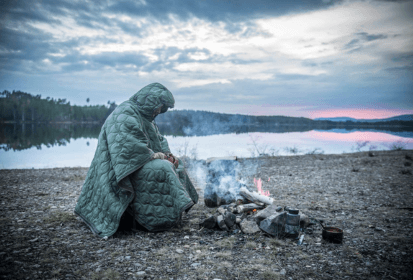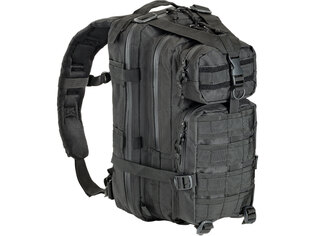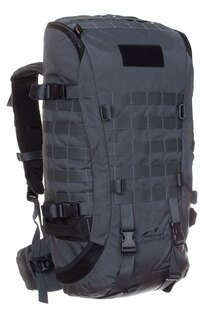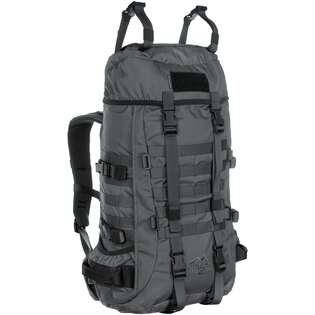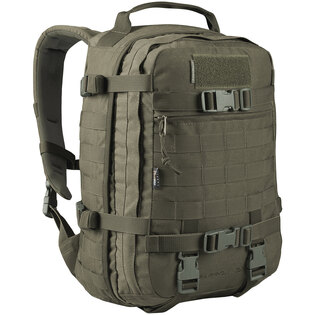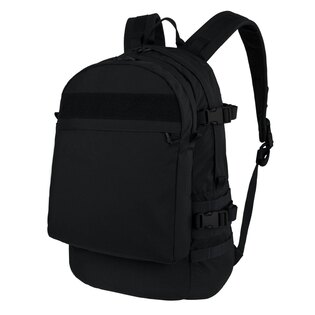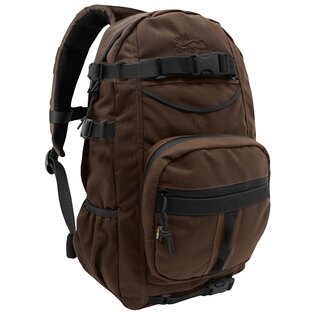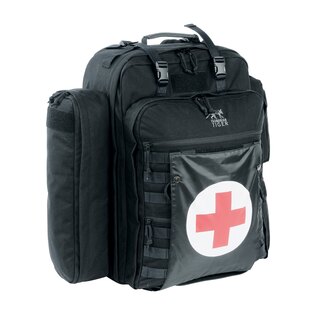Tips from the tester: What should a backpack for the mountains and work meet?
Our tester for Rigad Magazine readers thoroughly tested the Summit backpack from Helikon-Tex over several months. But before we get to the actual review, which you will find in tomorrow's follow-up article, let's clarify the 7 main criteria that you should not overlook when choosing a versatile medium backpack for mountains, work, or exercise. Let's go!
Are you looking for a medium-sized universal backpack and, like me, tend to prefer the military range? I have a tip for you. For almost ten years, I have been dedicating my time to trying and testing military backpacks of all types and sizes, from small EDC to large 120-liter backpacks from manufacturers like Mystery Ranch, Source, Tasmanian Tiger, Direct Action, or Helikon-Tex. During that time, more than fifty different backpacks have rotated on my back, and I have fallen in love with their benefits, such as thoughtful design, modularity, and durability.
The only thing that began to bother me over time was the overly imaginative appearance. When I went outside the military area with any of them, passersby immediately recognized that I belonged to the army. Therefore, I started looking for something different. Something that would retain the advantages and qualities of the military line, but wouldn't look military at first glance.
Now you might think, why not try something normal? Maybe Osprey, Deuter or Millet? These manufacturers specialize purely in outdoor gear and should solve your problem. But… Once you get used to military backpacks, it's hard to leave them. So I started searching…

Are you looking for an outdoor backpack that retains the qualities of the military line but at the same time won't look out of place in a civilian environment?
7 basic criteria for selecting a backpack
I specified the things I want from a backpack for the mountains and work:
- Size.
- Shape and combined system of access to things.
- Back system.
- External and internal division.
- Materials and their resistance.
- Weight.
- Price.
Size
The first and probably most important thing when choosing a backpack is the purpose for which you will use it and what you will carry in it for that purpose. From experience, I know that a 40-liter size suits me best for a multi-day stay in nature. I tend to stuff unnecessary things into larger ones and can't fit into smaller ones. Additionally, a 40-liter backpack still maintains an element of minimalism when I need to use the bus or train while traveling.
2. Shape and combined system of access to things
The first backpacks I tested in the past were either chimney-style with top loading and fastened with two fastex clips, or they opened like a can using a zipper. Each of these variants had its pros and cons. The revolutionary solution and a certain combination of these systems were introduced by the tri-zip from Mystery Ranch and a few years later by Tasmanian Tiger with their modular thirty.
Both of these systems allowed for top loading and front access to the backpack's contents. This meant you knew exactly where everything was in your backpack, and if you needed an item at the bottom, you could reach it through the middle zipper without having to take everything out. And I wanted this feature in a mountain backpack as well.

The central zipper allows easy and quick access to the main compartment.
3. Back system
I used to be really attached to Mystery Ranch. I really like their backpacks because they are almost perfect in every way, both in the military and outdoor series. However, none of their back systems ever suited me. It might be too complex for my back. I found that a system which has only limited possibilities for height and tilt adjustment from the back suits me the best. Ideally, when the shoulder straps are sewn directly onto the body of the backpack and fit me without the need for further adjustments.
Regarding padding and ventilation, I also prefer a certain middle ground here. I just don't want the things inside the backpack to press against my back during the journey. And even a backpack with the best ventilation will warm you up after a few kilometers.
The system goes hand in hand with the hip belt. I prefer it when it is not overly stiff and is lightly padded (due to the range of motion when walking). If it also has pockets on the outer sides and reverse tightening, that's a great bonus.
4. External and internal organization
I used to have a tendency to compartmentalize everything into slots and pockets. Every item had to have its exact designated place, and the more pockets the backpack had inside and out, the better. However, each additional pocket brought extra weight, and occasionally, I would catch an external pocket on something in the forest. Therefore, I wanted the backpack to be as unsectioned as possible inside and as smooth as possible on the outside.
Most military and outdoor backpacks also have a separate pocket for a hydration system on the inner side by the back. However, for me, this was not a requirement when choosing, as the bladder has burst on me more than once in the past, and so I rarely use hydration systems.
5. Materials and their resistance
The reason why I prefer military backpacks over civilian ones is primarily their durability. Most backpacks in the military range are designed to withstand heavy loads and prolonged rough handling. Of course, I don't plan to drag the backpack on the ground to test its durability, but this factor is a sure bet for me. The same goes for the zippers and buckles used. If the backpack doesn't have a YKK zipper, I won't consider it.

Once you get used to military backpacks, you don't want to give them up.
6. Weight
Here, besides the color and eye-catching style, another downside of military backpacks appears. With the benefit of the construction I described above, there is also a negative point in the form of weight. And if you plan to walk long distances with the backpack like I do, you will appreciate every saved gram.
When I was packing for one of my first multi-day stays in the forest (outside of work), I tended to take the largest backpack, fearing I might forget something. It looked like I was capable of completely filling the space of a 100-liter backpack and still hanging a few things around it. The weight thus often exceeded twenty kilograms, and I counted every kilometer to the end.
A few years ago, I came across ultralight and since then, I have been trying to reduce the volume and weight of things as much as possible. I do not plan to go to the extreme of this community, but I want to achieve a total gear weight of around ten kilograms while still maintaining the comfort I am used to.
7. Price
One time I came across a podcast by ultralight hikers, in which they explained how they pack for their several hundred kilometers long journeys and why their backpacks have such a construction. And that was an absolute game changer for me.
As soon as the Gossamer Gear backpack appeared in the video, I was convinced, even though I didn't want to compromise on my requirements at any cost. It met almost all the criteria I demanded from a mountain backpack, even though it lacked a combined loading access and was designed only for a certain load. But that was based on the ultralight category, for which it is primarily intended.
What captivated me about it was a completely new system of closing the main chamber (the same system as with waterproof bags). I don't like the usual closing with two buckles, as it is, for example, with the standard issue twenty or most large backpacks.
Another thing that caught my attention was the minimum of zippers. You only found them on a small pocket next to the main compartment and on the side pockets of the hip belt. This solution was here so that you wouldn't have to deal with a stuck zipper in the sleeping bag or its complete breakdown while on the road. And weight also played a certain role here.
I looked at the shop's website, where it could be bought and read a little about it. The excitement waned the moment I got to the price… However, its shape and overall design captivated me so much that I absolutely needed to find some cheaper alternative.
My tip
One evening, I was browsing the Rigad.cz pages and a backpack from Helikon-Tex with almost the same shape named Summit popped up. My eyes lit up like a child's at Christmas, and the very next day I flew to the Olomouc store. I brought all my complete hiking gear with me so I could find out right there how it would fit.
The guys at the store accommodated me with the trial without any problems, and the only downside the backpack had was that it wasn't available in black :) In the following review, we will take a closer look at it. Stay with us!
Continuation of the article: Review of the Summit Helikon-Tex Backpack.
Readers are further interested
